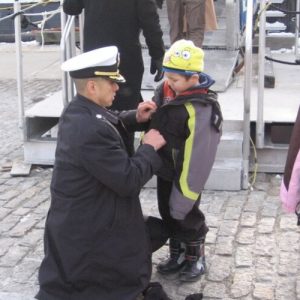Trevor Ron Lin

The Lin kids were fun-loving, enjoying the company of each other, including trick-or-treating in 2009. Eleven year-old Ashley had started a mild cough a few days prior, and previously healthy and fit 7 year old Trevor followed suit on Halloween in his Star Wars Clone Trooper costume.
But in the wee hours the day after Halloween, Trevor’s cough became seal-like and then developed along with shortness of breath and fever. As a general surgeon, his father turned on the shower to see if the steam would improve his shortness of breath. There was initially much improvement but Trevor then started developing significant mucus and his father became worried about croup. So he urgently drove Trevor to the emergency room at the region’s premier hospital.
The emergency medicine physicians diagnosed presumptive croup and treated Trevor with steroids. The diagnosis of novel H1N1 influenza virus, or swine flu, was entertained but the EM physicians felt the guidelines from the Centers for Disease Control did not include Trevor. (Sepsis and Influenza) That is, anti-viral therapy (oseltamivir (Tamiflu)) was purportedly only for high risk patients (children with co-morbidities or pregnant women). During the Emergency Department visit, Trevor developed another episode of shortness of breath & with a fever of 103.7F, with his heart rate raced to an abnormally high level of more than 120 beats per minute despite his blood oxygen saturation levels remaining normal at 97%. No x-rays or lab tests were performed.
But after the steroids had started taking effect and later during the ED visit, Trevor felt and looked better and the providers discharged him from the Emergency Department.
Trevor was returned home and his symptoms improved that night. That next morning, his cough was minimal and he had no difficulty breathing.
The following afternoon, however, Ashley watched Trevor walking unsteadily at home and fell with blue lips and fingers.
Despite resuscitation efforts and ambulance transportation to the nearest emergency room, Trevor was pronounced dead within 2 hours after his collapse.
Since this presentation, Trevor’s father has worked with the Paediatric International Patient Safety and Quality Community (PIPSQC) to help clarify that Pediatric Early Warning Signs (PEWS) may have prevented Trevor from dying. Retrospectively, the elevated heart rate inappropriate for his age as well as his rapid breathing should have prompted laboratory and radiologic tests to evaluate for sepsis. These tests may have assisted the providers in seeing if Trevor meet the criteria for sepsis, prompting an admission to the Intensive Care Unit rather than being sent home. Furthermore, the warning signs for early sepsis in pediatric flu are indicated in the following document found on this website: https://engagedpatients.org/pediatric-flu-warning-signs/
Source: Henry Lin, father



























